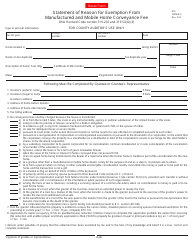

“There is no reason why destination charges are not incorporated into the cost of the vehicle,” Gillis says, “except that it enables the manufacturer to charge more.”ĭan Bedore, an independent consultant with 25 years of executive experience at several car manufacturers, puts it more starkly. The conclusion of many consumer advocates is that inflating destination fees is just a way for automakers to boost the bottom line without officially raising prices. “The automaker should be responsible for getting their product to the retailer, just like eggs to a grocery store or electronics to a store such as Best Buy,” says Jack Gillis, executive director of the Consumer Federation of America. And almost no other business expects consumers to pay separately to send goods to stores. Car buyers often pay extra for options like leather seats and high-end sound systems, but delivery is no more optional than a windshield. That lack of transparency has led many to wonder why delivery costs are foisted on consumers at all.

(This ensures that customers don’t pay more or less based on location.) None would provide a detailed breakdown of how they calculate the fees on any particular model. factories or ports to the closest and most distant dealerships. When we asked for more explanation on how destination fees are calculated, almost all of the manufacturers we contacted repeated the same vague formulation: They’re simply the average of what it costs to deliver a model from U.S. BMW, Infiniti, Lexus, Lincoln, Mercedes-Benz, and Volvo each grew their fees by less than 20 percent.

Audi showed the slowest increases, for example, inching its average destination fee up 10 percent. “The bigger the truck, the fewer you may be able to fit on a carrier/rail car,” he explained.ĭaniel Barbossa, a Ford spokesperson, echoed that point, telling us that “the shift by consumers to SUVs and trucks” has contributed to increased shipping costs, along with the high demand for shipping and a shortage of skilled drivers.īut if that’s the case, then how have other automakers managed to keep the fees from increasing as much? While our investigation found that almost all of them had increased destination charges over the past decade, many had done so in line with inflation, which rose about 18 percent over the period. Most didn’t answer the question directly some declined to comment.Ī GM spokesperson, James Cain, wrote in an email that freight and logistics costs had increased, and pointed to growing sales of pickups and SUVs. We asked several automakers, including Acura, Ford, General Motors (GM), Kia, Mini, Stellantis, and Toyota, why destination fees are on the rise. Other models with sizable destination fees include the much anticipated new Ford Bronco and the smaller Ford Bronco Sport, for which the fee is $1,495, and the 2021 Ford F-150 and Ram 1500 pickups, at $1,695. The charges on one model, the Jeep Cherokee, rose to $1,495 in 2019 from $995 in 2016, a 50 percent increase in just three years.

Destination fees rose an average of 90 percent on Chrysler, Dodge, and Jeep vehicles 74 percent on Ram trucks since 2011 and 114 percent on Fiats since 2012. Stellantis, the company formerly known as Fiat Chrysler that’s behind the Chrysler, Dodge, Fiat, Jeep, and Ram brands, among others, is a notable example. Amid the overall growth of destination fees across the industry, our investigation found a wide range of variation, including several pockets of especially significant increases.


 0 kommentar(er)
0 kommentar(er)
